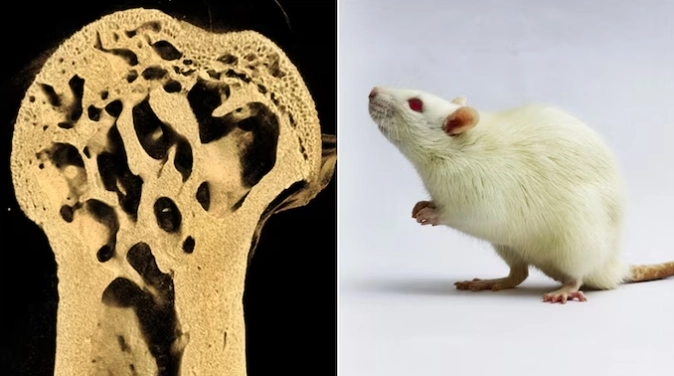
Long-duration spaceflight has major health implications, which are visible on Crew-9 astronauts, including Sunita Williams, who returned to Earth after spending nine months in space.NASA has been regularly studying how extended time in zero gravity affects bones, and they have made some strange discoveries in the bones of mice that were sent to the International Space Station.
The study has uncovered how weightlessness in space leads to significant bone loss in mice, providing important insights that could help protect astronauts during long missions.
Researchers found that microgravity primarily affects weight-bearing bones while leaving non-weight-bearing bones largely unaffected, suggesting that mechanical stress is crucial for maintaining bone health.
The study focused on mice sent to the International Space Station (ISS) for 37 days as part of NASA's Rodent Research-1 experiment. The results revealed several important points:
Femur vs. Spine: Mice experienced substantial bone density loss in their femurs, which bear weight, but not in their spine vertebrae, which are primarily loaded by muscle activity. This confirms that bones relying on gravity for daily stress weaken significantly without it.
Premature Aging: The research also found that microgravity accelerated ossification in the femur’s growth plate, where cartilage turns to bone. This could lead to premature stunting of bone growth in young mammals, including humans.
Habitat Matters: Mice housed in Nasa’s ISS Rodent Habitat—designed with 3D wire-mesh surfaces for climbing—maintained or gained bone mass, while those in standard cages experienced significant bone loss. This suggests that physical activity can counteract the negative effects of microgravity.
Bone loss in space mimics osteoporosis but occurs at a rate ten times faster than on Earth. Astronauts on six-month missions can lose up to 10% of their bone mass, increasing the risk of fractures.
The study confirms that microgravity, rather than space radiation, is the primary driver of this decline, as spine bones showed no damage.
Researchers emphasise the need for improved exercise equipment on spacecraft and enriched habitats to simulate mechanical stress.
Understanding these effects is critical for future Mars missions, where bone loss could pose serious health risks to crew members.
This study highlights a universal truth: Bones need resistance to stay strong—whether from gravity, exercise, or innovative habitats.
As scientists continue to explore the impacts of space on health, these findings pave the way for better strategies to protect astronauts during their journeys beyond Earth.